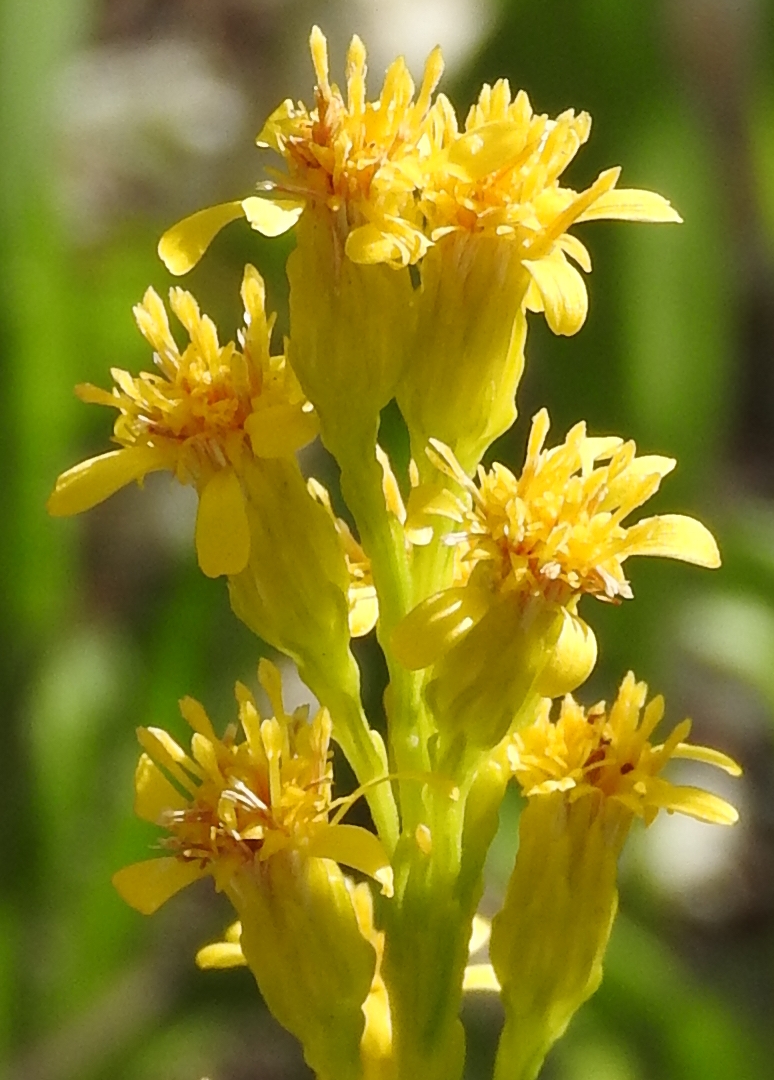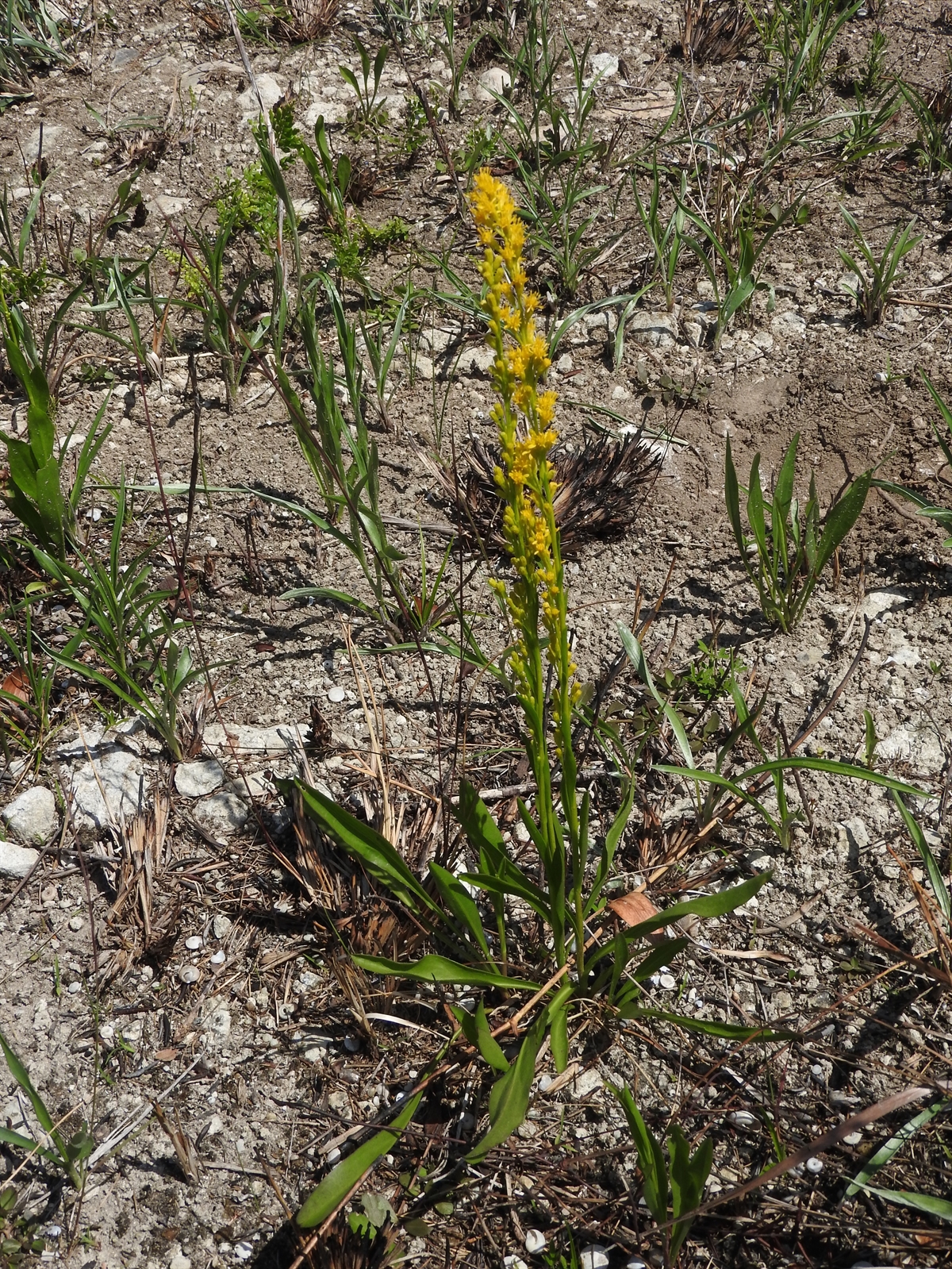Habit: Solidago sempervirens is an herbaceous perennial up to 1m in height (usually less). Leaves arranged in a basal rosette with leaves on the flowering stalk arranged alternately and smaller, elliptic to oblanceolate/spathulate, to 40 cm in length and 7 cm wide, with an acute to obtuse leaf apex.
There are both perfect and imperfect (carpellate) flowers in heads. The heads are subtended by a series of involucral bracts (phyllaries). The perfect (disc) flowers are in the center and the imperfect (ray) flowers are arranged around the edge of the heads. Each flower is subtended by a green bract. The heads are arranged in spikes/panicles. The calyx that has been modified as a ring of small hairs (pappus
The incomplete, imperfect, zygomorphic (ray) flowers have fused, yellow, petals (unlobed apex) and no stamens. The complete, perfect, actinomorphic (disc) flowers have a corolla with 5 fused, yellow petals. There are 5 stamens fused at their base. In both types of flowers, the ovary is inferior with a single locule but only the imperfect flowers have functional ovules. The fruit is a ridged achene at maturity.
Habitat: Solidago sempervirens grows in cut Pine Woodlands, burned fields, low wet areas.
Distribution: Solidago sempervirens occurs in the Lucayan Archipelago on Abaco, Grand Bahama and New Providence, north eastern Canada and the United States.
Medicinal/Cultural/Economic usage: Solidago sempervirens is not known to be used medicinally in the Lucayan Archipelago.


